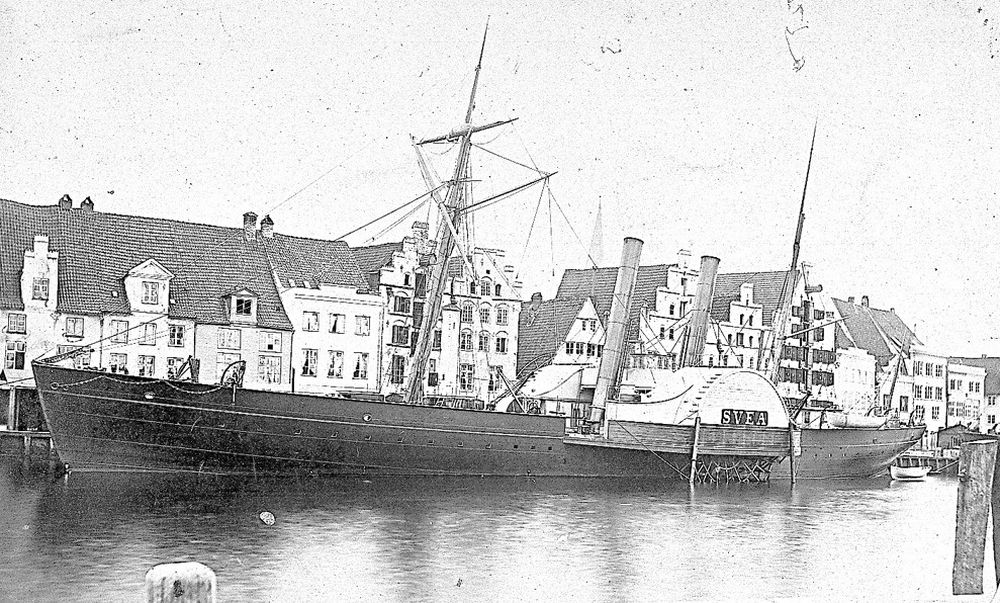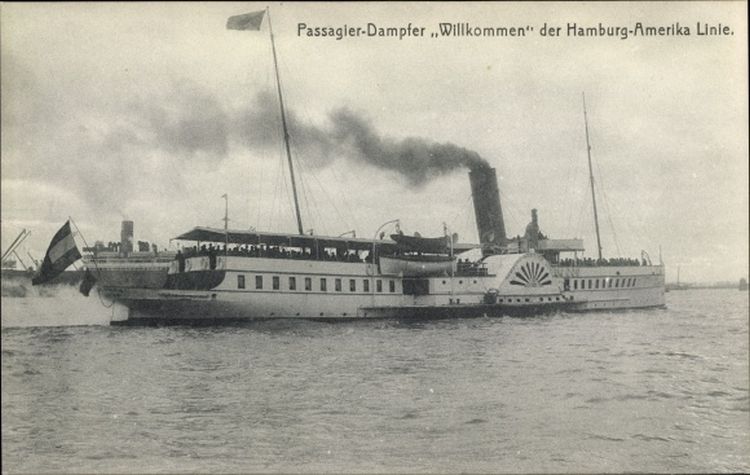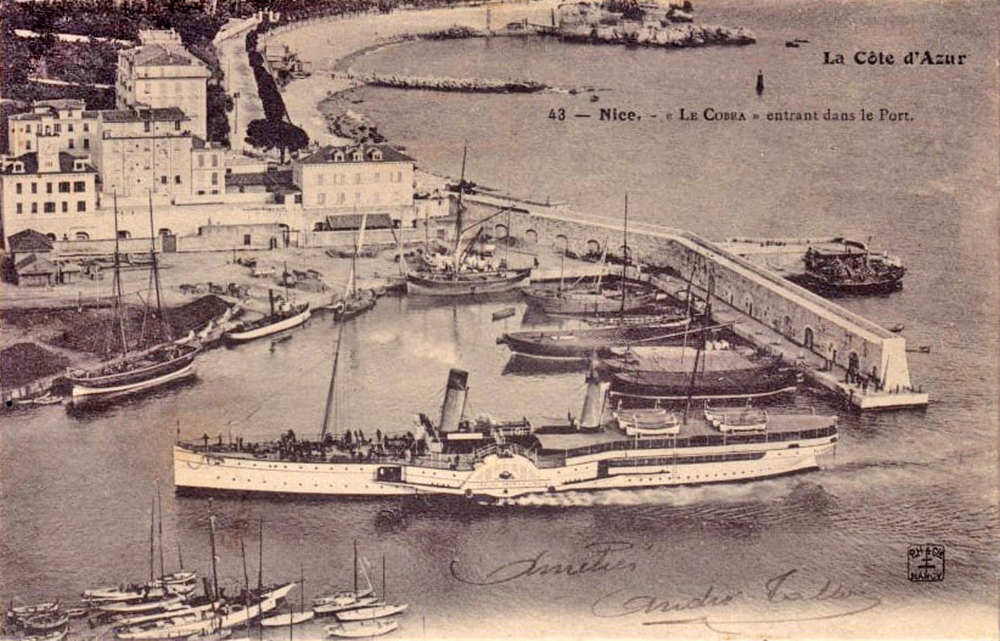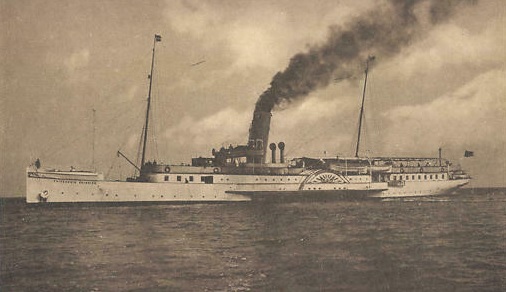paddlesteamers.info : The Internet's leading website for
Side-Wheeled Paddle Steamers
German
North Sea Coast and
Islands
Hamburg-Amerikanischen
Packetfahrt (HAPAG)
Founded in May 1847, this
Hamburg based company was to become one of the largest operators of
ocean liners, especially famous in the heyday of German shipping up
until the First World War and are recognised as offering the first
dedicated cruises under the visionary management of Albert Ballin.
After the decline of ocean passenger
shipping, the company became a major cargo transporting conglomerate.
In the passenger shipping field, the company, now known as
HAPAG-Lloyd, operate a large number of cruise liners worldwide as
well as river cruisers in Europe.
The company decided to enter the
Helgoland business in 1866 when an almost new paddle steamer became
available for sale in Scotland. A second vessel was bought in 1870 and
a third in 1872, with the second purchase being relegated to estuarine
service.
In 1875, HAPAG absorbed the failing transatlantic Adler-Linie
(and disposed of the paddle steamer Hoboken to the GSN in London)
In 1904, HAPAG absorbed Ballin's Company (later the
Nordsee-Linie).
Paddle
Steamers
Groden (1862-1865)
Cuxhaven (1866-1884)
Helgoland (1870-1912) Renamed
Blankenese in 1872
Helgoland (1872-1875 and sold in 1879)
Willkommen (1899-1924)
Cobra (1904-1919 and 1920-1921)
Prinzessin Heinrich (1904-1923)
.
Groden
Built in 1843 in the UK
Length : 46 m
Built for Karlshutte in Flensburg as Konigin Caroline Amalie and sailed between Flensburg, Copenhagen and Aarhus
Taken over by the Danish Navy in 1848
From 1851 sailed for the JJ Danielsen shipping company of Flensburg until 1861 when sold to HH Roller at Rendsburg
Sold to HAPAG at Hamburg. Germany in 1862 and used as a tender and for sailings to the German North Sea beach resorts as Groden
Rebuilt as a lighter in 1866, sailing on until 1877
Cuxhaven
Launched on August 17th 1864 by Caird & Co
at Greenock, Scotland
Dimensions : 67.6 m x 6.8 m
402 Gross Registered Tons
Built as Herald for blockade running for the Confederate States in the American Civil War but not delivered
Sold to local interests in Glasgow and renamed Hattie
Sold to HAPAG in 1866 to inaugurate their Helgoland service and renamed Cuxhaven
Sold in 1884 to the Cuxhaven-Unterelbesche-Eisenbahn-Gesellschaft
(Cuxhaven-Lower Elbe Railway Co)
Sold in 1890 to the Ballin steamship company of Hamburg, but operated
on the Baltic Sea out of Stettin
Stranded and sank off the north German coast on July 24th 1891 with
the loss of three lives
Helgoland (later Blankensee)
Built in 1866 by Aitken & Mansel at Glasgow, Scotland
Length : 69.92 m (231.2 ft)
398 GRT
Built as Albert Victor for service on the River Thames by the London & Margate Saloon Steam Packet Co
Purchased by HAPAG in 1869 and renamed Helgoland.
Renamed Blankenese in 1872 as the vessel was used on Elbe estuary services
Scrapped in France in 1912
Helgoland (ex - Ixion, ex - Svea)

Above : As SVEA, seen at Lubeck, Germany. From the Erik Holmberg collection at the Sjohistoriska museet, digital archive. https://creativecommons.org/publicdomain/mark/1.0/deed.en
Built in 1858 by Motala Mekaniska Verkstad, Norrkoping Yard, Sweden
Dimensions : 68.6 m x 8.4 m
618 Gross Registered Tons
Built for operation in by Schon & Co of Stockholm Sweden as Svea
Renamed Ixion in 1871
Purchased by HAPAG in August 1872, being placed on the
Hamburg-Helgoland route and taking the name of the Helgoland of 1866.
She was laid up in 1875
Sold in May 1879 to Schweffel & Howaldt, shipowners at Kiel
Heavily rebuilt in 1884
Sold in 1886 for use at Trieste as Cattaro
From 1897 was in operation at Naples, Italy as Napoli
Scrapped in 1913
Willkommen

Above : Post card view of Willkommen - the last paddle steamer in service on the Helgoland route for HAPAG
Launched in April 1895 by J
Scott & Co at Kinghorn, Fife
Engines : Compound Diagonal 31 x 60 in x 60 in
Dimensions : 67.2 x 7.9 metres
654 Gross Registered Tons
Ordered by the
Plymouth Belle Steamship Co for cruising out of Plymouth, South
Devon, England as Plymouth Belle
Spent her first season on long cruises to the Channel Isles and Isles
of Scilly with little financial success.
On charter to Mr R Collard, sailing from the Sussex piers on
England's South Coast
Purchased by the Hamburg-Amerika line (HAPAG) of Germany in October
1899.
Renamed Willkommen and put on the Hamburg to Helgoland route.
Ferried tourists to the North Sea island beach resorts for HAPAG
until 1924
From October 13th 1924 she sailed for the Hamburg-Stade-Altlander
linie on the lower River Elbe as Cuxhaven
Latterly owned by the Hafen-Dampfschiffahrsts-AG (HADAG), she was
withdrawn in 1929 and scrapped
Former Ballin / Nordsee Linie vessels
Cobra

Above : Cobra was to be seen on numerous post cards of Nice, France, where she spent several off-seasons
Launched on March 2nd 1889 by Fairfield
Shipbuilding & Engineering at Glasgow, Scotland
Dimensions: 80.7 m x 10.1 m : 847 GRT
Engine : Compound diagonal 50 and 92 in x 66 in
Ordered by the well-known Burns Line of Glasgow which dominated the Glasgow to Northern Ireland trade
Not taken into the Burns fleet she was briefly owned by North Wales
interests and named St Tudno
Sold almost immediately during 1890 to the Ballin company at Hamburg
and named Cobra
From 1897 her owners traded as Nordsee-Linie before being taken over
by HAPAG in 1905
Served her summers on the Hamburg to Helgoland and Sylt service
In the winter of 1902-1903 she sailed under charter out of Genoa,
Italy
Also spent winters at Nice, France sailing for HAPAG (Compangnie Hambourgeoise Anaricaine) Service de la Riviera.
Reboilered and refurbished in 1919 but passed to French owners as war
reparations
HAPAG repurchased the vessel in 1920 but her time was short, being
sold in December 1921 to breakers.
Prinzessin Heinrich

Launched on April 11th 1896 by Blohm & Voss at Hamburg
Engines : Triple Expansion
Dimensions: 76.3 x 8.3 m
919 Gross Registered Tons
Built for Ballin's Steamship Company of Hamburg which in the next
year became the Nordsee-Linie GmbH
Chartered to HAPAG in 1904 for whom she spent winter months on the
French & Italian Riviera
HAPAG took over the Nordsee-Linie in 1905 and continued with the winter Riviera programme until the outbreak of World War I
Laid up and used as a hospital ship at Hamburg during World War I
Reactivated for a short period in 1919 and in 1920 was moved to East Prussia to sail for Seedienst Ostpreussen
Sold for scrapping in 1923
Return
to
German North Sea Coast and
Islands : Hamburg operators



